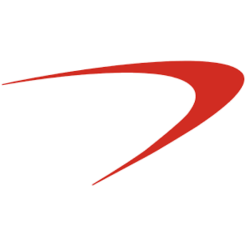Capital One demonstrates strong business quality through solid financial performance, a diverse portfolio, and competitive advantages, though faces challenges with increasing expenses and charge-off rates. Future prospects are bolstered by growth initiatives in consumer banking and a strategic acquisition, while economic pressures and regulatory hurdles present potential risks.
Analysis Date: January 21, 2025
Last Updated: March 11, 2025
Trailing Twelve Months (TTM) values provide a view of the company's performance over the last year.
Graham Value Metrics
Benjamin Graham's value investing approach focuses on finding stocks with a significant margin of safety between their intrinsic value and market price.
Intrinsic Value
Estimated fair value based on Graham's formula
$477.85
Current Market Price: $150.67
IV/P Ratio: 3.17x (>1.0 indicates undervalued)
Margin of Safety
Gap between intrinsic value and market price
68.0%
Graham recommended a minimum of 20-30% margin of safety
Higher values indicate a greater potential discount to fair value
ROE: 7.933492281547115
ROA: 0.22360775608800681
Gross Profit Margin: 100.06020599049606
Net Profit Margin: 10.213516244866364
Trailing Twelve Months (TTM) values provide a view of the company's performance over the last year.
Strong Net Profit Margin
The net profit margin of 10.21% indicates that the company retains a solid portion of its revenue as profit, reflecting efficient cost management.
Consistent Gross Profit Margin
100.06%
Gross Profit Margin
The gross profit margin of 100.06% indicates strong pricing power and effective cost of goods sold management.
Moderate Return on Equity
The return on equity of 7.93% is relatively low, suggesting that the company may not be utilizing its equity effectively to generate profits.
Operating Profit Margin Concerns
11.39%
Operating Profit Margin
The operating profit margin of 11.39% is moderate, indicating potential room for improvement in operational efficiency.
About Profitability Metrics
Profitability metrics measure a company's ability to generate earnings relative to its revenue, operating costs, and other relevant metrics. Higher values generally indicate better performance.
Return on Equity (ROE)
Measures how efficiently a company uses its equity to generate profits
7.93%
10%
15%
Higher values indicate better returns for shareholders
TTM (as of 2025-04-16)
Return on Assets (ROA)
Measures how efficiently a company uses its assets to generate profits
0.22%
3%
7%
Higher values indicate better asset utilization
TTM (as of 2025-04-16)
Gross Profit Margin
Percentage of revenue retained after accounting for cost of goods sold
100.06%
20%
40%
Higher values indicate better efficiency in production
TTM (as of 2025-04-16)
Net Profit Margin
Percentage of revenue retained after accounting for all expenses
10.21%
8%
15%
Higher values indicate better overall profitability
TTM (as of 2025-04-16)
Low Debt-to-Equity Ratio
0.74
Debt-to-Equity Ratio
With a debt-to-equity ratio of 0.74, the company maintains a manageable level of debt relative to its equity, indicating a balanced approach to financing.
Liquidity Ratios Below Standard
The current ratio and quick ratio both stand at 0.0, indicating potential liquidity issues, as the company may struggle to meet short-term obligations.
Weak Interest Coverage
An interest coverage ratio of 0.36 suggests that the company may have difficulty covering its interest expenses, raising concerns about its ability to manage debt.
About Financial Health Metrics
Financial health metrics assess a company's ability to meet its financial obligations and its overall financial stability.
Debt to Equity Ratio
Total debt divided by total equity
0.74x
1.0x
2.0x
Lower values indicate less financial leverage and risk
Less than 1.0 is conservative, 1.0-2.0 is moderate, >2.0 indicates high risk
Q4 2024
Current Ratio
Current assets divided by current liabilities


